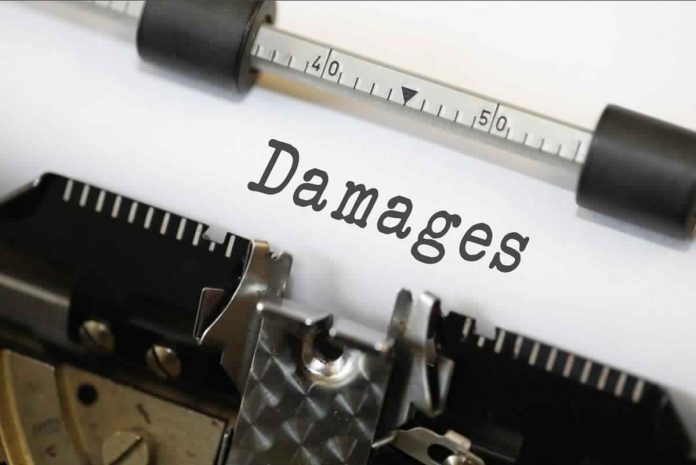This article has been written by Kajori Roy, who is pursuing a Diploma in Advanced Contract Drafting, Negotiation, and Dispute Resolution, and has been edited by Shashwat Kaushik.
This article has been published by Sneha Mahawar.
Table of Contents
Introduction
Mental suffering is a kind of emotional distress caused by someone else’s action, either intentionally or accidentally. Mental suffering is something that is a psychological injury not related to physical. The law recognizes emotional distress as mental suffering, which is invisible. An insurer is a company or entity that pays out that compensation when the customer suffers a loss. The insurance policy is a kind of promise to reimburse the policyholder for a loss, and the insurer is liable for fulfilling those promises.
With the passage of time, acknowledgement of mental health is increasing gradually, and the law plays a vital role in this. There are a number of cases where the law recognizes mental suffering. Laws that recognize mental suffering are: –
The sections of the Indian Penal Code that deal with mental harassment are:
- Sec 294: Obscene acts and songs,
- Sec 354: Assault or criminal force to woman with intent to outrage her modesty,
- Sec 354A: Sexual harassment and punishment for sexual harassment,
- Sec 498A and 509,
- Sec 67 and Sec 67 A of the Information Technology Act, 2000,
- The Protection of Women from Domestic Violence Act, 2005,
- The Dowry Prohibition Act, 1961
An analysis of emotional distress in the eye of the Law
Earlier, damages in cases of mental injury were only recoverable in tort in the case of assault, battery, or false imprisonment. Eventually, the court recognized the mental injury as independent harm. Tort law provides protection to people from the wrongful conduct of others in terms of their person or property. With the passage of time and the advancement of society, emotional distress is considered one of the most serious harms. Emotional distress is further divided into two parts-
- Intentional infliction of emotional distress, and
- Negligent infliction of emotional distress.
Intentional infliction of emotional distress
There are certain kinds of behaviour where there is no physical harm, but that is deeply offensive in terms of physiologically involving such a kind of behaviour that it causes mental trauma to the plaintiff. Not all offensive conduct is considered intentional infliction of emotional distress.
The essential elements of intentional infliction of emotional distress that a plaintiff must prove to recover damages are:
- The defendant must act intentionally or reckless;
- It should be extreme and outrageous conduct; and
- Causes severe emotional injury.
Fletcher v. Western National Life Insurance Co.,
U.L. Fletcher was a forty-year-old man who was a victim of an industrial accident. He was a family man, and to give protection to his family, he purchased a disability insurance policy from the defendant. He suffered an injury in his back while he was at work; he was eventually placed on disability by his employer. Despite all the medical reports, the insurer’s company found a way of avoiding Fletcher’s claim and concluded that the claim was only for sickness and not for any injury. Fletcher filed a case at this point against Western National for intentional infliction of emotional harm. The court found that the insurer acted maliciously in bad faith and awarded compensatory damages to Fletcher. The case moved to the California Court of Appeals, where the Court found the defendant’s actions extreme and outrageous, and due to the defendant’s wrongful action, the plaintiff suffers mental injury. So historically, it was the first case to make use of a new tort, the intentional infliction of mental distress, in the insurance sector.
Negligent infliction of emotional distress
Negligent infliction of emotional distress is a tort where a defendant’s negligent act becomes the reason for someone’s mental suffering. To establish the claim, plaintiff has to prove: –
- That the act of the defendant was negligent,
- That due to the defendant’s negligent act, the plaintiff suffered severe mental distress. Recognition of the intentional tort of bad faith is an altogether new concept in tort law. Recovery of damages for the tort of bad faith develops through judicial decisions. At common law, there was no tort of bad faith actionable against an insurer. Hilker v. Western Automobile Insurance Co. (1931) was the first case that shed light on and sanctioned a cause of action for bad faith conduct by the insurer.
Crisci v. Security Insurance co. (1967)
In the law of contract, normally an insurance contract is governed by the obligations of the parties and awards damages for the breach of the contract, and the general rule is that damages for mental suffering are not allowed. The English case of Hadley v. Baxendale(1854) talks about two types of damages one is general damages and the other is consequential or special damages. According to the rule of Hadley v. Baxendale, consequential damages can be claimed by the non-breaching party only if both parties to the contract are aware of the possibility of the loss. Generally, insurance contracts are observed by the court as commercial in nature rather than personal, and damages for mental suffering are allowed only in the case of a personal contract. However, the situation changed after the case of Crisci v. Security Insurance Co., in which Rosina Crisci, who was the owner of an apartment building, purchased general liability insurance of $100,000 from Security Insurance Co., covering her apartment building. One of the tenants of Mrs. Crisci suffered a physical injury and experienced psychosis after this incident, falling down from the staircase of the apartment. He filed a suit against Mrs. Crisci, seeking damages for personal injury against her for $400,000. The defendant insurance company had an opportunity to settle the claim but neglected to do so. As a result, the suit went for trial, and Mrs. Crisci was held liable and instructed to pay damages of $101,000. Due to this, she suffered a huge financial loss, which led to mental trauma and a suicidal tendency in her. She brought a suit against the Security Insurance Company for neglecting to settle the claim, which is covered under the policy. The court held in this case that emotional distress damages were recoverable for an insurer’s bad faith conduct and introduced the ‘bad faith law.’ Further, the court made the observation that, though the bad faith law is generally treated as a tort, the plaintiff is not precluded from maintaining a claim in the contract as well. Generally, damages for mental suffering are not available under a commercial contract. The court found that liability insurance is a personal contract in nature that is responsible for the peace of mind of the insured person.
Damages in a bad faith case
Broadly, there are three categories of damages, and those are:
Economic,
Non-economic, and
Punitive,
Economic damages are the damages that are caused in monetary terms and can be measured as a quantity. For e.g.,- a medical treatment bill. These damages can easily be compensated for or restored, which helps restore a person to their original condition. But non-economic damages can’t be restored or compensated; these include pain, humiliation, damage to reputation, etc. Punitive damages can be awarded if it is proved that the insurance company’s intention was to commit fraud with the client, or acted with ill will, etc.
Economic damages
Economic damages are directly related to the claims you file for if you suffer losses. For e.g.,- if your car meets with an accident, you can easily calculate the cost of restoring it. We all get insurance with the hope that these companies will compensate us for our losses, but sometimes these companies underpay, refuse to pay, ignore some portion of the claim, etc., in such cases, they are said to act in bad faith. As a result, you are entitled to seek economic damages caused to you because they acted in bad faith.
Non-economic damages
We get insurance for times of emergency, and the last thing we can expect in such times is for these companies to act in bad faith. So when these companies act in bad faith we obviously suffer losses, and because of those, we get stressed, feel mental pain and agony so in such cases you can sue for damages for causing mental pain, agony, etc. Non-economic damages include pain, stress, harm to reputation, public humiliation, etc.
Punitive damages
Punitive damages are the damages that are awarded over actual damages as a punishment, these are added additionally to the actual damage amount. These damages are generally awarded at the court’s discretion if they consider the defendant’s behaviour to be exceptionally harmful.
How much is a bad faith claim worth
This question can’t be answered directly because the value of the claim is greatly influenced by the type of damage. Every case has its own factors and complications, and the amount of damage depends only on those factors.
Conclusion
In order to recover damages under a contract, both parties must be aware of the possibility of future losses due to the breach of the contract. Mental suffering is not foreseeable by an insurer, and recovery of damages for mental suffering in a contract is not so smooth because it is caused by an insurer. Tort law played a huge role in recognizing intentional infliction of mental distress. The new tort remedies compensate the insured and deter insurers from denying future claims. Tort law is not codified in India, largely following the British Common Law. Though there is an awareness of emotional distress, there is still a long way to go. Emotional distress caused by an insurer is not well addressed in India. The “new tort” law added altogether a new dimension to an insurance contract where remedies for mental suffering are available.
References
- https://www.butler.legal/recovery-of -damages-for-emotional-distress-in-tort
- https://lawshelf.com/coursewarecontebtview/intentional-infliction-of-emotional distress
- https://www.butler.legal/recovery-of-damages-for-emiotinal-distress-in-tort
- https://scholarship.law.nd.edu/cgi/viewcontent.cgi?article=2907&context=ndlr
Students of Lawsikho courses regularly produce writing assignments and work on practical exercises as a part of their coursework and develop themselves in real-life practical skills.
LawSikho has created a telegram group for exchanging legal knowledge, referrals, and various opportunities. You can click on this link and join:
Follow us on Instagram and subscribe to our YouTube channel for more amazing legal content.
 Serato DJ Crack 2025Serato DJ PRO Crack
Serato DJ Crack 2025Serato DJ PRO Crack












 Allow notifications
Allow notifications



